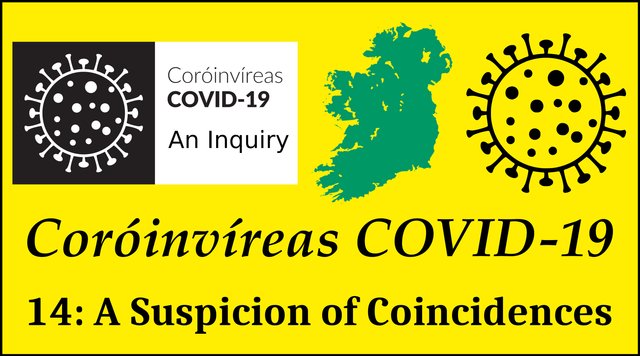
In the last article in this series, we looked at the “coincidence” that Event 201, a tabletop simulation of a coronavirus pandemic, was barely over when the World’s first ever coronavirus pandemic broke out. In this article, we are going to document several other strange coincidences and synchronicities that surround the covid-19 event.
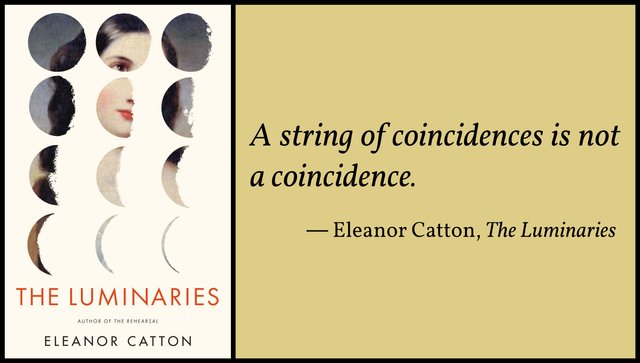
Collective nouns are a strange breed among the lexical menagerie that is the English language:
- A murder of crows, a damning of jurors, an incredulity of cuckolds, a superfluity of nuns, a shrewdness of apes, a skulk of foxes, a sleuth of bears.
Who comes up with these?
When several coincidences occur in succession, they are referred to as a string of coincidences. But coincidences often come all together in a constellation rather than a series strung out over time. I suggest that suspicion would make a much better collective noun for coincidences of this sort:
The covid-19 event was certainly accompanied by a suspicion of coincidences. Let’s take a look at a few of them.
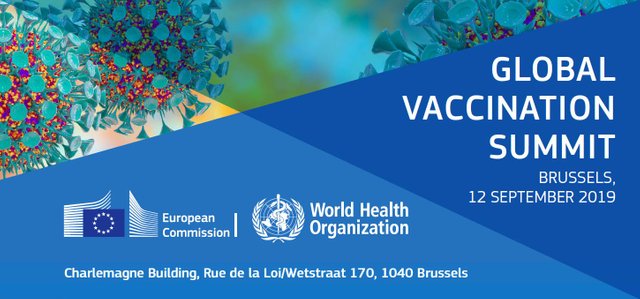
Global Vaccination Summit
On 12 September 2019, just five weeks before Event 201, the World Health Organization and the European Commission held a Global Vaccination Summit in Brussels, the “capital” of the European Union. The summit was convened to address the growing problem of “vaccine-hesitancy”. Their glossy booklet begins with the usual tales of the miraculous achievements of modern vaccinology—tales which have been exposed as myths by the recent book Virus Mania:
Vaccination is one of the most successful public health measures of modern times. Thanks to widespread vaccination, smallpox has been eradicated, Europe is polio-free, and the global death rates from vaccine-preventable diseases have fallen dramatically over several decades. Vaccination prevents an estimated 2.5 million deaths worldwide each year and reduces disease-specific treatment costs. However, unequal access to vaccines and waning public confidence in vaccination are putting hard-won public health gains at risk. Insufficient vaccination coverage rates have allowed outbreaks of infectious diseases to become increasingly common. The World Health Organization (WHO) declared vaccine hesitancy as one of the main global health threats for 2019. (Global Vaccination Summit)
The opening round table discussion of the summit was given the title In Vaccines We Trust, a parody of the official motto of the United States of America, In God We Trust. This speaks volumes about the religious nature of modern vaccinology. Vaccines are literally godlike to these people.
The attendees of the summit agreed that the following actions should be taken:
Promote global political leadership and commitment to vaccination and build effective collaboration and partnerships—across international, national, regional and local levels with health authorities, health professionals, civil society, communities, scientists and industry—to protect everyone everywhere through sustained high vaccination coverage rates.
Ensure all countries have national immunisation strategies in place and implemented, and strengthen its financial sustainability, in line with progress towards universal health coverage, leaving no one behind.
Build strong surveillance systems for vaccine-preventable diseases, particularly those under global elimination and eradication targets.
Tackle the root causes of vaccine hesitancy, increasing confidence in vaccination, as well as designing and implementing evidence-based interventions.
Harness the power of digital technologies, so as to strengthen the monitoring of the performance of vaccination programmes.
Sustain research efforts to continuously generate data on the effectiveness and safety of vaccines and impact of vaccination programmes.
Continue efforts and investment, including novel models of funding and incentives, in research, development and innovation for new or improved vaccine and delivery devices.
Mitigate the risks of vaccine shortages through improved vaccine availability monitoring, forecasting, purchasing, delivery and stockpiling systems, and collaboration with producers and all participants in the distribution chain to make best use of, or increase existing, manufacturing capacity.
Empower healthcare professionals at all levels as well as the media, to provide effective, transparent and objective information to the public and fight false and misleading information, including by engaging with social media platforms and technological companies.
Align and integrate vaccination in the global health and development agendas, through a renewed Immunisation agenda 2030.
It is just a coincidence that a pandemic broke out months after this summit, a pandemic that conveniently led to the rolling out of a major vaccination program across the globe. It is just a coincidence that the COVID-19 propagandists used the very same phrase—leaving no one behind—as the participants of the Global Vaccination Summit. Actions 1, 3, 5 and 9 are particularly interesting in the light of the past two years. Public-private partnerships have played a key role in controlling the covid narrative. The use of digital technology to surveil the masses and monitor vaccine uptake has been followed through with alacrity. And the annihilation of free speech across multiple platforms and media outlets has been nothing short of Orwellian.
Nothing to see here, people. Move along home.
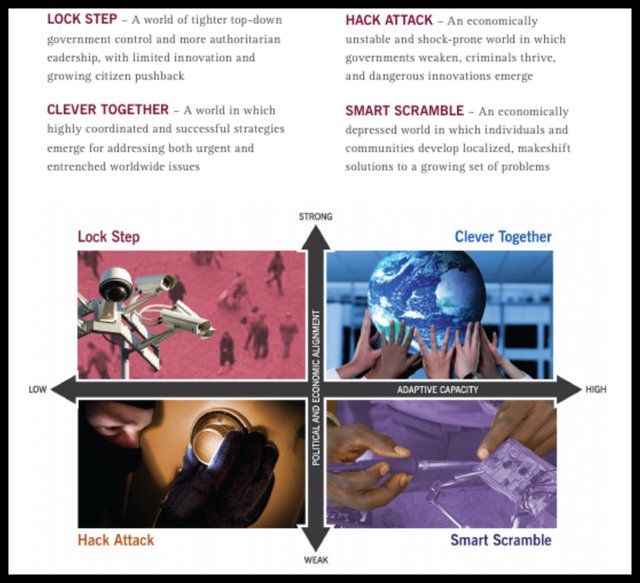
Lock Step
In 2010, the Rockefeller Foundation and Global Business Network published a 54-page report entitled Scenarios for the Future of Technology and International Development. This report envisages four scenarios representing four very different futures for mankind. The first of these scenarios is called Lock Step, which is described as a world of tighter top-down government control and more authoritarian [l]eadership, with limited innovation and growing citizen pushback—in English, “Totalitarianism”.
The Lock Step scenario envisages the outbreak of a global pandemic in 2012:
In 2012, the pandemic that the world had been anticipating for years finally hit. Unlike 2009’s H1N1, this new influenza strain—originating from wild geese—was extremely virulent and deadly. Even the most pandemic-prepared nations were quickly overwhelmed when the virus streaked around the world, infecting nearly 20 percent of the global population and killing 8 million in just seven months, the majority of them healthy young adults. The pandemic also had a deadly effect on economies: international mobility of both people and goods screeched to a halt, debilitating industries like tourism and breaking global supply chains. Even locally, normally bustling shops and office buildings sat empty for months, devoid of both employees and customers.
It has to be admitted that this fictional pandemic of 2012 does not really resemble the alleged covid-19 pandemic that we got for real in 2020, though the economic effects are eerily prescient of the effects of the covid lockdowns.
Lock Step is very accurate in predicting the pivotal role China would play in setting the example to be followed by the West:
The pandemic blanketed the planet—though disproportionate numbers died in Africa, Southeast Asia, and Central America, where the virus spread like wildfire in the absence of official containment protocols. But even in developed countries, containment was a challenge. The United States’ initial policy of “strongly discouraging” citizens from flying proved deadly in its leniency, accelerating the spread of the virus not just within the U.S. but across borders. However, a few countries did fare better—China in particular. The Chinese government’s quick imposition and enforcement of mandatory quarantine for all citizens, as well as its instant and near-hermetic sealing off of all borders, saved millions of lives, stopping the spread of the virus far earlier than in other countries and enabling a swifter post-pandemic recovery.
The spread of authoritarian measures to other countries is also a surprisingly accurate prediction:
China’s government was not the only one that took extreme measures to protect its citizens from risk and exposure. During the pandemic, national leaders around the world flexed their authority and imposed airtight rules and restrictions, from the mandatory wearing of face masks to body-temperature checks at the entries to communal spaces like train stations and supermarkets. Even after the pandemic faded, this more authoritarian control and oversight of citizens and their activities stuck and even intensified. In order to protect themselves from the spread of increasingly global problems—from pandemics and transnational terrorism to environmental crises and rising poverty—leaders around the world took a firmer grip on power.
In recent months, there have indeed been some ominous warnings of a possible transition from covid lockdowns to climate-change lockdowns.
The report also envisages a few outcomes which have taken place during the current crisis:
Citizens willingly gave up some of their sovereignty—and their privacy—to more paternalistic states in exchange for greater safety and stability. Citizens were more tolerant, and even eager, for top-down direction and oversight, and national leaders had more latitude to impose order in the way they saw fit.
In developed countries, this heightened oversight took many forms: biometric IDs for all citizens, for example, and tighter regulation of key industries whose stability was deemed vital to national interests. In many developed countries, enforced cooperation with a suite of new regulations and agreements slowly but steadily restored both order and, importantly, economic growth.
However, the report’s long-term assessment of increasing authoritarianism is decidedly pessimistic. The authors of the report cannot be accused of salivating with anticipation of Lock Step becoming a reality:
By 2025, people seemed to be growing weary of so much top-down control and letting leaders and authorities make choices for them. Wherever national interests clashed with individual interests, there was conflict. Sporadic pushback became increasingly organized and coordinated, as disaffected youth and people who had seen their status and opportunities slip away—largely in developing countries — incited civil unrest. In 2026, protesters in Nigeria brought down the government, fed up with the entrenched cronyism and corruption. Even those who liked the greater stability and predictability of this world began to grow uncomfortable and constrained by so many tight rules and by the strictness of national boundaries. The feeling lingered that sooner or later, something would inevitably upset the neat order that the world’s governments had worked so hard to establish.
Some “conspiracy theorists” regard Scenarios for the Future of Technology and International Development as the Elites’ playlist and regard its publication as another example of The Revelation of the Method, which we discussed is the last article. In 2009, just before the publication of the report, the WHO declared a global swine-flu pandemic. Fortunately, in 2009 there were still a few honest and independently-minded journalists in the mainstream media (MSM), who exposed this as a scamdemic and the whole thing very quickly fell apart. It took the Elites ten years to co-opt the MSM to their ranks and try once again to manufacture a pandemic out of thin air. This time it has worked like a charm. Did the Rockefeller Foundation and Global Business Network think that they would be ready to try again in as little as three years?
On the other hand, the concluding paragraphs of the Lock Step Scenario suggest that this is not actually the Elites’ preferred future for our World. So perhaps the appearance of this report a few years before the covid pandemic was just a coincidence after all.
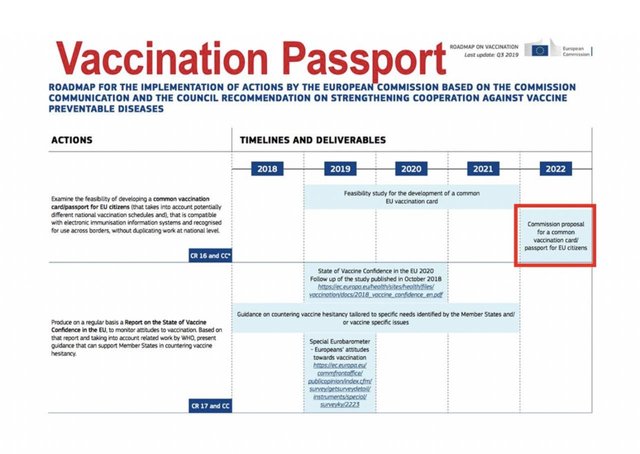
Roadmap on Vaccination
In September 2019, the European Commission updated its Roadmap on Vaccination, which outlines a five-year plan to introduce vaccine passports for all EU citizens. The plan runs from 2018 through 2022. The full title of this plan is:
Action 1 reads:
Examine the feasibility of developing a common vaccination card/passport for EU citizens (that takes into account potentially different national vaccination schedules and), that is compatible with electronic immunisation information systems and recognised for use across borders, without duplicating work at national level.
This feasibility study was planned to take place in the years 2019-2021, with the European Commission’s proposal for a vaccine passport due to be presented in 2022.
Other actions prepared as part of this plan include:
Countering online vaccine misinformation, taking into account the Commission Communication on tackling online disinformation.
Examine the feasibility of establishing, by 2020, guidelines for a core EU vaccination schedule taking into account WHO recommendations for routine immunisation, aiming to improve the compatibility of national schedules and promote equity in Union citizens’ health protection.
Design EU methodologies and guidance on data requirements for better monitoring of vaccination coverage rates across all age groups, including healthcare workers, in cooperation with the WHO and collect such data and share them at EU level.
Development of e-learning training modules targeting GPs and primary healthcare providers focused on improving skills to address hesitant populations and promote behavioural change.
Set of actions funded by Horizon 2020 and actions undertaken by ECDC to address low-vaccine uptake, and behavioural study on vaccination to identify determinants of vaccine hesitancy across different subgroups of the population and health workers.
Strengthen existing partnerships and collaboration with international actors and initiatives, such as the WHO and its Strategic Advisory Group of Experts on Immunization (SAGE), the European Technical Advisory Group of Experts on Immunization (ETAGE), the Global Health Security Initiative and Agenda processes (Global Health Security Initiative, Global Health Security Agenda), Unicef and financing and research initiatives like Gavi, CEPI, GloPID-R and JPIAMR (the Joint Programming Initiative on Antimicrobial Resistance).
It is, of course, just a coincidence that a once-in-a-century pandemic broke out in the middle of this roadmap, facilitating its implementation.
Nothing to see here, folks. Move along home.
Global Vaccine Action Plan
In 2018, the WHO’s Strategic Advisory Group of Experts on Immunization (SAGE) published its Assessment Report of the Global Vaccine Action Plan:
The Global Vaccine Action Plan, launched in 2011, set out goals and objectives for the immunization community for the decade to 2020. Its vision was of a world in which all individuals and communities enjoy lives free from vaccine-preventable diseases ... To ensure continuity, development of a new strategy needs to begin before the end of the Decade of Vaccines in 2020.
Did you know that the ten years from 2011 through 2020 were the “Decade of Vaccines”? How convenient that a global pandemic on the scale of the Black Death broke out just as this Decade of Vaccines was coming to an end! Fortuitous, but entirely coincidental, of course.
GVAP was a collaborative effort, involving the Bill & Melinda Gates Foundation, GAVI Alliance, UNICEF, and the WHO, “along with all partners—governments and elected officials, health professionals, academia, manufacturers, global agencies, development partners, civil society, media and the private sector,” Together, these organizations and individuals comprise the Decade of Vaccines (DoV) Collaboration.
In April 2019, Draft Zero of the GVAP was published. The opening words of this document read:
As we approach the end of the Decade of Vaccines and with just a couple of years remaining on the Global Vaccine Action Plan (GVAP 2011-2020), a new strategy for immunization is needed for the entire health and development community—one that reflects the collective inputs of people, communities, governments, civil society, health professionals, academia, development agencies, and the private sector. The new strategy needs to be ready for endorsement at the 73rd World Health Assembly in May 2020.
Was the covid-19 pandemic a key part of this “new strategy for immunization”? Of course not. It is entirely coincidental that covid-19 arose just as the masterminds of GVAP were becoming desperate for a new strategy, with the end of their Decade of Vaccines looming.
Phew! That was a close one.
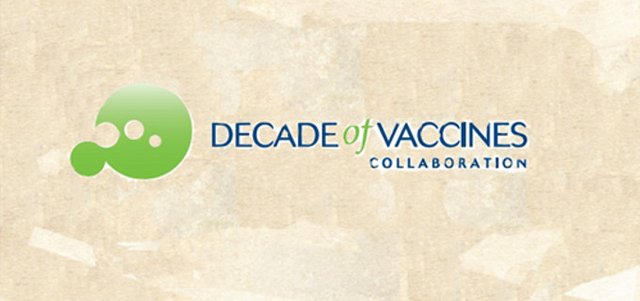
cMYP
The World Health Organization (WHO) and the United Nations were very busy during the Decade of Vaccines. It is hard to keep up with all the different vaccine and immunization programs they were working on between 2011 and 2020. In addition to the various GVAP initiatives, there was also the so-called cMYP, or comprehensive Multi-Year Plan for immunization.
On 25 January 2019, about one year before the covid pandemic, the WHO and UNICEF (the United Nations Children’s Fund) hosted a multi-partner conference on cMYP. The timing is not at all suspicious.
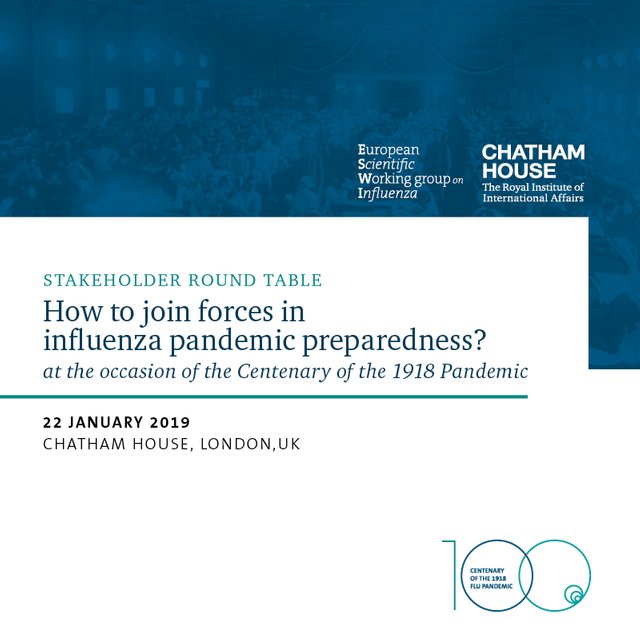
ESWI
Also in January 2019, the Royal Institute of International Affairs—also known as Chatham House—hosted a seminar of the European Scientific Working Group on Influenza (ESWI) with the title Joining Forces in Influenza Pandemic Preparedness. It was during this seminar that the Belgian virologist Dr Marc van Ranst gave an infamous talk on the use of propaganda to gaslight the gullible public. In 2007, the Belgian government appointed him Interministerial Commissioner for Influenza Pandemic Preparedness. A video of his talk at the 2019 seminar went viral during the covid event:
In day one you start your communication with the press, with the people. You have to go for one voice, one message. In Belgium they chose a non politician to do that. This makes things a little bit easier because you’re not attacked politically, and that was a huge advantage. The second advantage: you can play the complete naive guy. You have to be omnipresent so that you attract the media attention. You make an agreement with them that you will tell them all. If they call, you will pick up the phone. If you do that you can profit from these early days and get complete carpet coverage, and they're not going to search for alternative voices. The news is brought the way that you bring it.
Then you say that we are going to have [H1N1] deaths, of course that is completely unavoidable. I used that in the media. Seven deaths per day at the peak of the epidemic would be realistic. That is true in every year. However, talking about fatalities is very important because, when you say it, people say “Wow! You mean people die from influenza?” And then of course, a couple of days later, you had the first H1N1 deaths, and the scene was set and it was already talked about. I went to the first couple of funerals. You have to be very quiet, sit in the back, but it shows that you care. And I think that was, at that time, quite important. Then everything is set about the pandemic.
The crux of the campaign was the vaccination campaign. Then you had to pick who is going to be vaccinated first. I misused the fact that the top football clubs in Belgium made their soccer players priority people. So I said, I can use that because, if the population really believes this vaccine is so desirable that even the soccer players would be dishonest to get their vaccine [ahead of others], OK, I can play with that. So I made a big fuss about this. It worked.
The 2009 pandemic arrived, this was a good exercise for a big pandemic.
Fast forward one year, and these techniques were used to great effect during the covid event.
The Usual Suspects
In 2009, the WHO declared a swine-flu pandemic. Fortunately, there were still honest journalists working for the MSM back then and they called them out on it. Within a few weeks, the swine-flu pandemic was exposed as a scamdemic and the whole thing fell apart. You can read about this fiasco in the article Why the WHO Faked a Pandemic, which was published by Forbes Magazine on 5 February 2010. You will have to go to the Internet Archive’s Wayback Machine to find this article: in 2020, when researchers in the truth community drew attention to it, Forbes deleted it from their own website!
The World Health Organization has suddenly gone from crying “The sky is falling!” like a cackling Chicken Little to squealing like a stuck pig. The reason: charges that the agency deliberately fomented swine flu hysteria. “The world is going through a real pandemic. The description of it as a fake is wrong and irresponsible,” the agency claims on its Web site. A WHO spokesman declined to specify who or what gave this "description," but the primary accuser is hard to ignore.
The Parliamentary Assembly of the Council of Europe (PACE), a human rights watchdog, is publicly investigating the WHO’s motives in declaring a pandemic. Indeed, the chairman of its influential health committee, epidemiologist Wolfgang Wodarg, has declared that the “false pandemic” is “one of the greatest medicine scandals of the century.”
Even within the agency, the director of the WHO Collaborating Center for Epidemiology in Munster, Germany, Dr. Ulrich Kiel, has essentially labeled the pandemic a hoax. “We are witnessing a gigantic misallocation of resources [$18 billion so far] in terms of public health,” he said. (Fumento
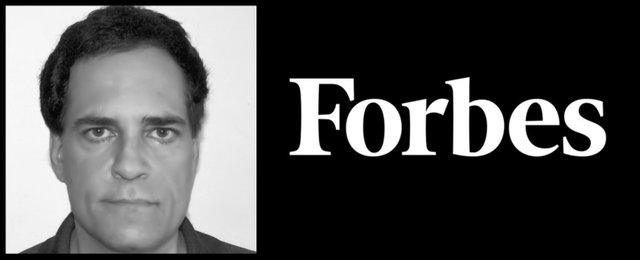
The author of this article, Michael Fumento, is the Director of the Independent Journalism Project.
The curious thing about the swine-flu scamdemic is that a number of prominent promoters of the fake narrative resurfaced again eleven years later to become prominent promoters of the covid narrative. Two are particularly worthy of note:
- Christian Drosten: The German virologist Christian Drosten is the man who oversaw the production of the RT-PCR diagnostic test for COVID-19, without which there might never have been a pandemic. This test was ready for use on 23 January 2020, less than four weeks after the Chinese medical authorities first issued the epidemiologic alert that started the whole show. The WHO endorsed the test and mass production of the kits began in earnest. Back in 2003, Drosten and his team won the race to develop the first diagnostic test for SARS, the supposed forerunner of COVID-19. And in 2009, he was once again in the vanguard. On that occasion, it took him four days to develop a test for swine flu:
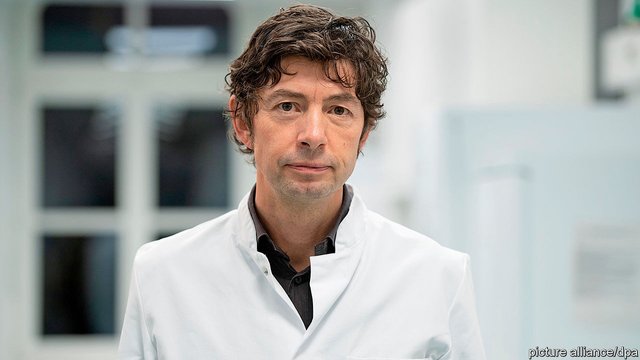
I was at my desk at about 11am on Friday 24 April when the phone rang. It was Stephan Becker, head of virology at the University of Marburg in Germany. He had heard about swine flu from colleagues in America. Both of us had somehow overlooked the first report on ProMed-Mail [the global rapid-alert information webpage for infectious disease outbreaks] — there are so many small reports on that site, it is paradoxically easy for important issues to be missed. It was already being transmitted fast between people, so we knew it was something big. I thought, “Oh no, not now” ...
In general, you need to generate primers to segments of the virus that are unique. It is easy enough to identify these segments using proprietary software to compare sequences. Then you synthesize nucleotide sequences that correspond to these segments. These are called primers, which you use to amplify genetic material from the pathogen if it is present in the test sample.
On Saturday, Marcus Panning at the University of Freiburg identified which primers were needed (while I went to a wedding!). Olfert Landt of the Berlin company TIB Molbiol made the primers physically on Sunday. This part was critical — it is not so easy to get primers physically made to short order, especially over a weekend. I was lucky to have such a good contact in Olfert, again thanks to our work together in the SARS days.
By Monday morning we had everything in place, and we were able to confirm that the test worked in each of our three academic locations — Bonn, Marburg and Freiburg. During Monday we also sent the test to the Bernhard Nocht Institute in Hamburg, where I had worked during the SARS outbreak, and to Hamburg's public health laboratory. As it happened, one of the first suspected case in Germany was admitted to a Hamburg hospital the very next day. Both Hamburg laboratories were able to use out test in parallel straight away. The had the test confirmed by the national reference centre for influenza, the Robert Koch Institute in Berlin. (Abbott)
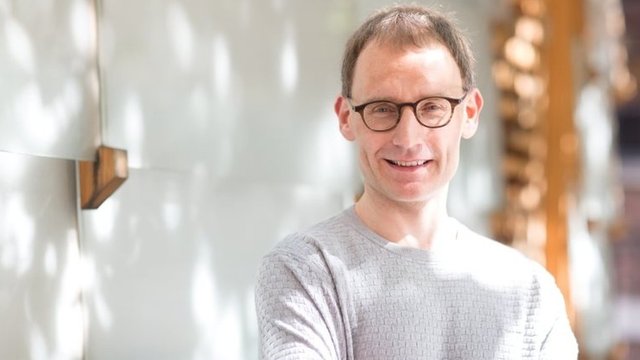
- Neil Ferguson of Imperial College London is infamous for his apocalyptic computer model of the covid pandemic, which envisaged hundreds of thousands of deaths in the UK alone if drastic measures were not taken to curtail the spread of the virus. In the eyes of the public, Ferguson became Professor Lockdown. But his predictions were so far off the mark that one wonders how he managed to keep his position on SAGE, the British government’s Scientific Advisory Group for Emergencies. Ironically, he was forced to step down when it was revealed that he broke his own lockdown measures in order to carry on an adulterous affair with his married lover. It was clear that he did not believe these measures were really necessary to protect life.
But Neil Ferguson was not new to this sort of thing (Engelbrecht et al 376-377):
In 2001, Ferguson’s overblown model of the foot-and-mouth epidemic led the British government to cull 7 million cattle, sheep and pigs.
In 2002, Ferguson predicted that up to 50,000 people in Britain alone could die from New Variant Creutzfeld-Jakob disease due to the consumption of BSE-contaminated meat—a figure that could rise to as much as 150,000. In the end, no more than 177 deaths were attributed to the disease.
In 2005, Ferguson predicted that up to 200 million people worldwide could die from avian flu. The WHO’s avian-flu death toll for the period from 2002-2015 was 440.
In 2009, Ferguson led the team that modelled the swine flu “pandemic”, and warned that one third of the world’s population would be infected in the first six to nine months of the pandemic. Based on his model, the British government estimated that as many as 65,000 deaths could occur. By the time the narrative had fallen apart, no more than 457 deaths in Britain were attributed to swine flu.

The Stand
In 1978, Stephen King first published his post-apocalyptic novel The Stand, in which a worldwide pandemic of weaponized influenza wipes out 99.4% of the global population. A TV miniseries based on the novel was aired back in 1994. It is entirely coincidental, however, that CBS aired a new miniseries based on The Stand in 2020, in the midst of the covid event. Filming began in September 2019, a few months before the Chinese medical authorities issued their epidemiologic alert. The filming of the miniseries wrapped in March 2020, just as the WHO declared a pandemic:
The production completed filming a few days before it would have been shut down due to the COVID-19 pandemic. (Wikipedia)
Just a happy coincidence. Move along home.
Selective Deaths
Some deaths of prominent people just before or during the covid event seem a little suspicious.
- Kary Mullis: The inventor of the laboratory technique known as PCR (Polymerase Chain Reaction), for which he shared the 1993 Nobel Prize in Chemistry, died from complications of pneumonia in August 2019. He was 74. Mullis was a harsh critic of Anthony Fauci. He denounced the use of PCR as a diagnostic tool to test whether a subject has a particular disease. He expressed doubts about the received view that AIDs is caused by a specific virus, HIV.
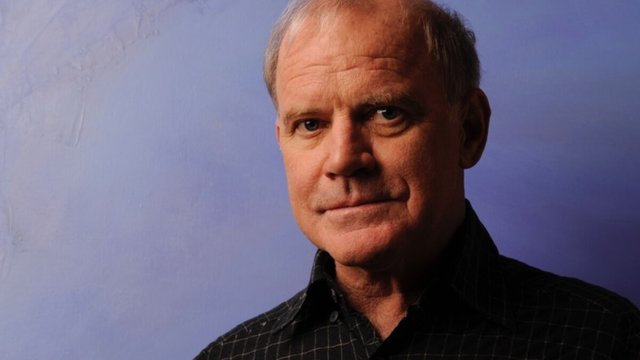
John Magufuli, President of Tanzania. Magufuli earned his Bachelor of Science in education degree, majoring in Chemistry and Mathematics as teaching subjects from the University of Dar es Salaam in 1988. He also earned his masters, and doctorate degrees in chemistry from the University of Dar es Salaam in 1994 and 2009, respectively. In May 2020, Magufuli tested the validity of Christian Drosten’s RT-PCR test by sending swabs taken from a goat, a quail, a sample of engine oil and a paw paw to the Tanzanian National Health Laboratory. When the tests came back positive for SARS-CoV-2 he sacked the technical director. In January 2021, Magufuli warned Tanzanians of the dangers of the covid vaccines. The following month, Magufuli disappeared from public view. On 17 March 2021, it was announced that he had died at the age of 61. The official cause of death is atrial fibrillation, but speculation has been rife that the actual cause was covid. His successor, Samia Suluha Hassan, has been an enthusiastic proponent of the use of quarantine, face masks, sanitization, social distancing and other non-pharmaceutical interventions to curb the spread of covid. In July 2021, she launched the country’s covid vaccination program, being one of the first to take the jab herself.
Pierre Nkurunziza, President of Burundi, called the WHO’s declared global pandemic nonsense. At the age of just 55, he suddenly died of a heart attack—though speculation was rife that he actually died of covid. His successor, Évariste Ndayishimiye, declared COVID-19 to be the nation’ worst enemy shortly after taking office. In October 2021, his government announced that it had received delivery of 500,000 doses of the Chinese Sinopharm BIBP vaccine.
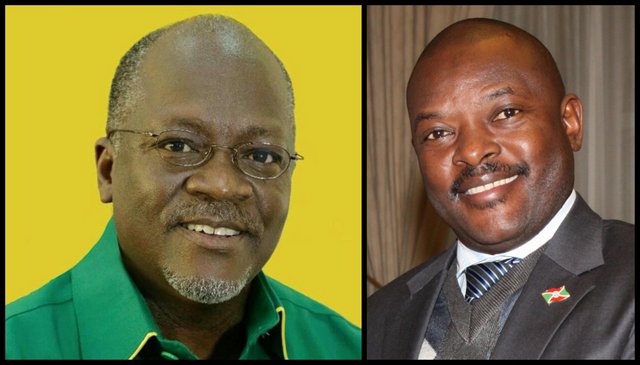
Fact Checkers
An important tool of the covid propagandists has been the widespread use of fact checkers on social media. These are non-experts who bend over backwards to discredit as misinformation anything that is not part of the official narrative, while ignoring everything that is part of that controlled narrative. Some fact-checking bodies have been around for many years. Snopes began investigating urban legends in 1994. Full Fact was founded in 2009 to provide a fact-checking service for various corporate bodies, including the BBC, ITV, Sky News. Since 2014, Full Fact has been recognized as a registered charity with the charitable object of “the advancement of public education.”
On 11 January 2019, one year before the pandemic, it was announced that Full Fact had been retained as Facebook’s official fact checking service. The founder of Full Fact, Michael Samuel, is a son of Peter Samuel, 4th Viscount Bearsted, an executive of Shell PLC, and Elizabeth Adelaide Cohen, a daughter of Lionel Cohen, Baron Cohen, a barrister and judge. He was educated at Eton. His children are said to be friends of Prince William, while his wife Julia Samuel is part of the Guinness dynasty and was a close friend of Princess Diana. Between 2009 and 2019 Michael Samuel donated £160,000 to the Conservative Party. In 2019, he was awarded an MBE.
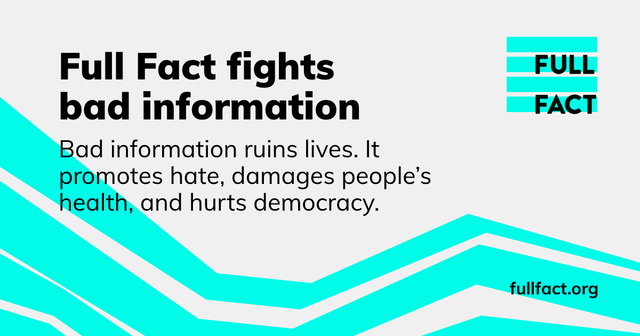
The WHO and UN declare 2011-2020 the Decade of Vaccines. A once-in-a-century pandemic breaks out just as this decade is coming to an end. Coincidence?
And that’s a good place to stop.
References
- Alison Abbott, German Virologist’s Race for Swine Flu Test, Nature Online (2009)
- Michael Fumento, Why The WHO Faked A Pandemic, Forbes (2010)
- Torsten Engelbrecht, Claus Köhnlein, Samantha Bailey, Stefano Scoglio, Virus Mania, Third English Edition, Books on Demand GmbH, Norderstedt (2021)
Image Credits
- COVID-19 Poster: © 2021 Dublin Region Homeless Executive, Fair Use
- Eleanor Catton, The Luminaries: © Granta, Fair Use
- Global Vaccination Summit: © European Union, 1995-2022, Creative Commons License
- Four Scenarios: © The Rockefeller Foundation & Global Business Network, Fair Use
- Roadmap on Vaccination (J.D): J. D, after © European Union, 1995-2022, Creative Commons License
- Decade of Vaccinations: © ISGlobal, Fair Use
- ESWI: © ESWI, Fair Use
- Michael Fumento: © 2022 The Times of Israel, Fair Use
- Forbes: © 2022 Forbes Media LLC, Fair Use
- Christian Drosten: © Dpa Picture-Alliance, GmbH, Fair Use
- Neil Ferguson: © Imperial College London, Fair Use
- The Stand (2020): © ViacomCBS Inc, Fair Use
- Kary Mullis: © Kent Clemenco (photographer), Fair Use
- John Magufuli: Copyright Unknown, Fair Use
- Pierre Nkurunziza: © Crown Copyright, Open Government Licence
- Full Fact: © Full Fact, Fair Use
Video Credits
- I Hate to Say I Told You So: Original Material © Dave Cullen, Fair Use
- Marc van Ranst Talk: © European Scientific Working group on Influenza (ESWI), Fair Use
Online Resources
- Event 201
- Global Vaccination Summit and Ten Actions
- Scenarios for the Future of Technology and International Development
- Roadmap for the Implementation of Actions by the European Commission Based on the Commission
Communication and the Council Recommendation on Strengthening Cooperation Against Vaccine
Preventable Diseases - Global Vaccine Action Plan
- Global Vaccine Action Plan: Assessment Report 2018
- Immunization Today and in the Next Decade: Draft Zero
- cMYP: Expanded Program on Immunization
- Ireland: Study of Covid-19 Deaths
- The Manipulation of Covid Mortality Statistics
- What Death Notices Tell Us about the Coronavirus across Ireland
- RIP.ie
- Central Statistics Office (CSO)
- Northern Ireland Statistics and Research Agency (NISRA)
- Covid-19 Pandemic
- Covid-19 Pandemic in the Republic of Ireland
- Covid-19 Pandemic in Northern Ireland
- Irish Government Updates on Covid-19
- Northern Ireland Covid-19 Statistics
- The CIA’s World Factbook
- EUROMOMO
- Our World in Data
- Rational Ground
